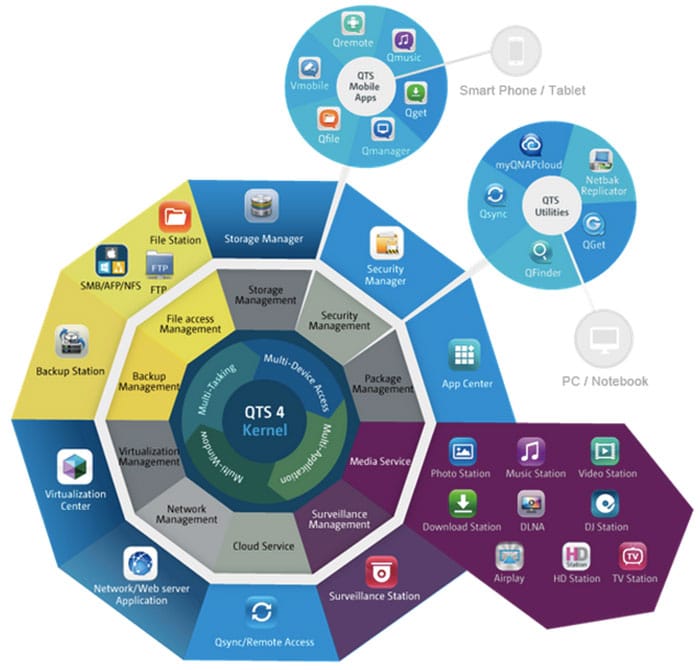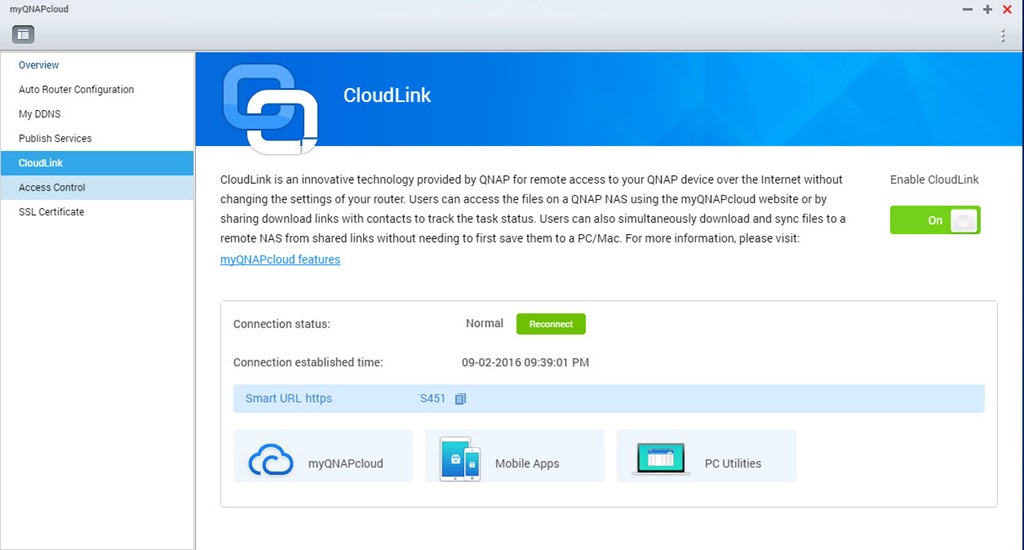2020. 1. 23. 19:19ㆍ카테고리 없음

WebDAV gives you the ability to transfer files to and from your network attached storage, securely, from anywhere in the world, just as easily if you were attached to a local USB drive. Windows PC and Windows Server 2012 use features built into Internet Information Services (IIS) to enable WebDAV. QNAP is no different, only.
Do you find it a hassle setting up remote access for your NAS, setting up port forwarding, or applying paid services for a domain name? The whole concept of QNAP CloudLink is to provide a pain free and simple way for users to setup these actions, and automatically select the best connection for you according to your network environment.How do you use it? It only takes a few simple clicks to finish everything and requires no technical background. So let’s get started: 1. Installation and Registration:No complicated port forwarding settings on the router are required: Simply install the CloudLink App, which you can find in the QTS App Center and sign in using your myQNAPcloud ID (QID) on your NAS.
CloudLink greatly simplifies remote connectivity to your NAS. If you don’t have a myQNAPCloud account, you can register for one in the myQNAPCloud page absolutely free.
Once your NAS is connected to the internet, it will report to myQNAPCloud for its existence. CloudLink will create a secure HTTPS connection between your device and QNAP Turbo NAS, and will keep the information on a relay site when the connection is established.2. Connection:Imagine that you’re traveling and you need to access your documents, photos, or want to watch videos or listen to your favorite music.
For example, you have important office documents that you need to print it out, or need to present a PowerPoint file that is saved back home on your NAS. What do you do? The solution is right at your fingertips. All you have to have access to your PC or mobile device, open a browser or Qfile (via mobile device), and your files are accessible just right away. Simply enter your myQNAPCloud ID (QID), and it provides the connection for all your devices.


CloudLink takes care of everything. In addition, the established connection is secured with SSL encrypted. CloudLink is also supported, as previously mentioned by the QNAP Qfile as well as the Qmanager mobile app as well as the Qsync utility feature.
Qnap Cloudlink Port Forwarding Settings
Access to your files, managing your NAS, and syncing all your data across multiple devicesCloudlink has you covered!3. Accessing multiple NAS devicesDo you have multiple NAS and have trouble keeping track of all the domain names? The myQNAPCloud server will list all your registered NAS and provide a link for you to access each NAS. Simply click to connect to your NAS and you’ll be instantly browsing all files stored on each NAS in one single portal.4. Port forwardingCan you setup port forwarding or enable UPnP port forwarding?

The answer is yes, you can. The port forwarding configuration and CloudLink can co-exist. When the ports of NAS are forwarded by the router, the data stream will not go through the relay site but directly to your device. If the port forwarding is not set, then CloudLink will take care of the connection for you. CloudLink will automatically switch to the best connection for you to let you easily access your files remotely.5. Select the best connection according to your network environmentAs I mentioned before, not all data streams will pass through myQNAPCloud Service but the fact is the CloudLink intuitively select the best connection for you according to your network environment.
Hey everyone,Is there a way to remote into my NAS without the aid of myqnapcloud service or cloudlink?Once upon a time I was able to navigate to it via the but that no longer works. Either does the mynas.myqnapcloud.com link. The only way in remotely has been through the qnap servers (which are slow and not secure). Does anyone have suggestions on things I can check to get qlink.to or myqnapcloud directly logging in?Btw those services DO work when im on my local network, but thats the only time. Perhaps some setting is off that wont allow me in from outside the local network? Again I can gain entry via the qnap servers, but thats the only way.thanks!. Thanks for the help.
Cloudlink Download
I probably should have provided this in the first place!QNAP model & QTS version (including build): TS-451 Firmware: 4.3.3.0262 Build 20170727QNAP Network setup (wired/wireless/port trunking etc.) I have a verizon Fios modem with DHCP enabled providing the IP addresses. From there I have an Apple Airport extreme which is providing wireless to all my devices. The Nas is wired (with two ethernet cables) directly to the apple airport. Should I be connecting to the Verizon Fios modem instead?Router Make and Model: Apple Airport extreme.
Qnap Cloudlink Not Working
I'm at work at the moment so I dont know the specific details, but I can get those.Overall Network Configuration. Like I said above. Verizon Modem providing dynamic IP's (as I believe they charge a fee for a static IP). Apple Airport is bridged mode providing all the wireless for my place. The NAS is hardwired directly from the apple airport extreme.Screenshot of auto-configure tab in myQnapCloud app: see link below. A few questions:. I assume the airport is hardwired to the Fios modem.
Why do you have 2 ethernet connections to the airport? How are they configured?. How many switch ports does the fios modem have and does it have a router/wireless embedded in it?You issue is that uPNP isn't able to set the correct network port forwarding.So lets simplify things:First - let's hook a single cable from QNAP to Fios Modem (remove any port trunking/load balancing that you have setup on the QNAP.Also lets shutdown FIOS modem and Qnap just to clear everything as well.Then power on Fios 1st (wait for it to settle in), then bring QNAP online.Then check myQnapCloud screen. See if uPNP is able to set ports properly.
